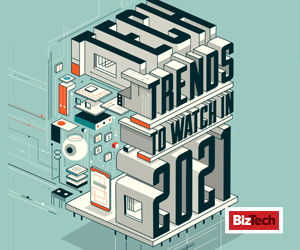The retail industry has faced unprecedented disruptions in 2020. Nonessential retailers have been forced to adjust to public health-related regulations and restrictions as the pandemic has worn on, leading them to pivot business models or even close. While essential retailers have been able to maintain their in-store experiences, they’ve also been faced with supply chain and inventory challenges throughout the global health crisis.
These near-constant adjustments have pushed retailers to rely on technology more than ever before, and organizations have recognized the crucial role that tech will play moving forward.
While not all of the trends adopted in 2020 will last, some of them are likely to shape the industry for years to come. These are the retail tech trends to watch for in 2021 and beyond.
1. BOPIS Is Here to Stay
Buy online, pickup in-store (known as BOPIS) has been a critical way for many stores to continue doing business. With social distancing restrictions limiting the number of people allowed in stores at one time, a growing number of customers have adopted BOPIS as their preferred form of shopping since it doesn’t require waiting for shipping.
Half of shoppers plan to increase their use of contactless pickup as the holiday shopping season progresses. To fulfill this need effectively, retailers will need integrated data analytics and management tools on mobile devices to keep employees up to date and advanced inventory management in order to ensure a seamless shopping experience.
2. Retailers Must Accommodate Varied Forms of Payment
Much like retailers must make accommodations for contactless pickup, they also need to accommodate new forms of payment in response to changing customer preferences. Contactless payment is key in this endeavor, and more shoppers are using it than ever before.
Research from the National Retail Federation found that 1 in 5 shoppers said they made a contactless payment for the first time during the pandemic, according to The Financial Brand. The same research found that 57 percent of customers said they would continue using contactless payment when the pandemic is over.
To accommodate new customer demands, retailers will need to have contactless point-of-sale readers as well as mobile POS systems. The convenience of these systems will cause them to last into 2021 and beyond.
3. Digital Commerce Will Expand the Use of AR/VR
Industries are finding new uses for augmented and virtual reality constantly, and retail is no different. AR/VR was featured on last year’s list of trends, but the sudden and steep shift to expanded digital commerce propelled by the pandemic has presented ideal circumstances for retailers to increase adoption of this technology.
Many shoppers don’t want to buy things like furniture or art without being able to see it in person — a problem that has become increasingly challenging with social distancing guidelines. From checking whether furniture will fit into a room to trying on makeup, the uses for AR/VR continue to expand at a time when the demand couldn’t be higher, making this a must-watch trend.
4. Retailers Will Lean on Analytics for Inventory Management
Businesses across sectors have been incorporating analytics more into their daily operations, and that trend only accelerated when the pandemic pushed work into the digital sphere. For retailers, this became particularly important for inventory management, as organizations had to manage strained supply chains and track sales across multiple locations and platforms.
Moving into 2021, retailers will want to ensure that they aren’t caught flat-footed if another major supply chain disruption arises. Predictive analytics powered by inventory management systems and Internet of Things sensors will play a key role in ensuring the right number of products are available in the proper channels.













